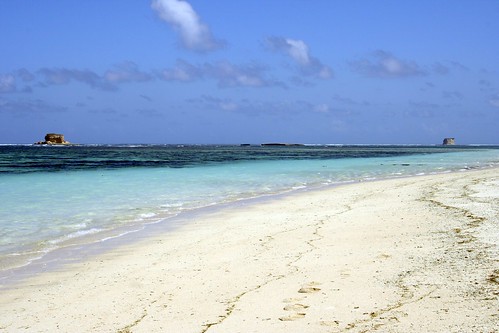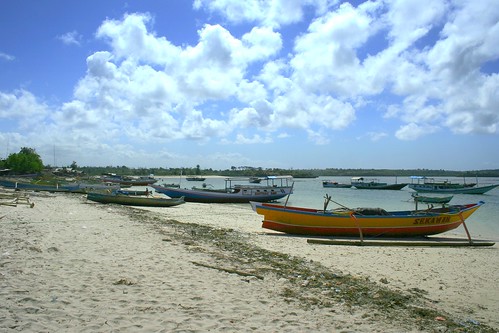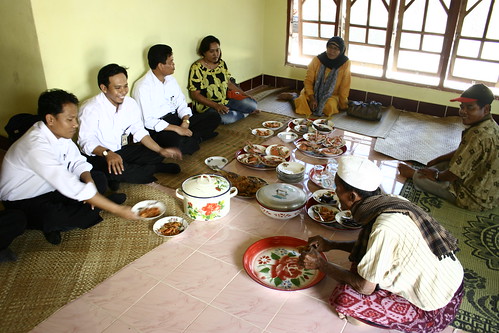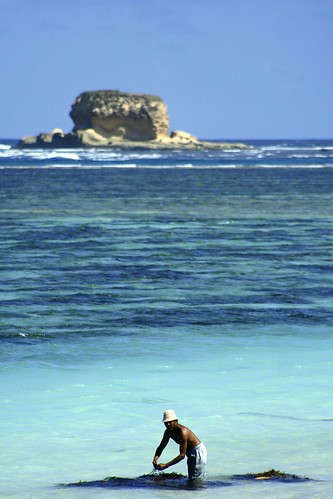the heavenly beaches of East Lombok- part 2
continued from part 1 and more in part 3, part 4 and part 5
How did I come to know the heavenly beaches of Serewe and Sumerang?
About 15 years ago, I lived for short periods of time in East Lombok, specifically in its “capital” town of Selong. My visits are frequent, at least four times a year, but I only stayed for a little less than two weeks each time. I was working on my master’s thesis then and I got dispensation from my boss that I can spend more time in my home base Cebu (the Philippines). My work was on the quality side of a seaweed project which aimed to develop the plantations in the eastern and southern parts of Lombok, with satellite developments in Bali where the project first started and Sumbawa, the island west of Lombok.
If I remembered right, the priority beach was Serewe. Sumerang came in second. At least that is what I remembered. These places were ideal for seaweed: wide reef flats, rich and clean waters with sufficient wave action, plenty of hardworking villagers and without any river tributary which made salinity fairly high and constant all year round.
Canon EOS 350D Digital, 1/500s, f/11, 18mm, ISO 100, -1/3EV
boats for seaweed farming at Serewe, East Lombok, Indonesia
There was one catch. The beaches are perfect tourist traps. Both coastlines stretch as far as the eyes can see. Their fine white sand extends attractively inland, deep into the villages. And the waters? Just the right shade of aqua blue, thanks to moderately deep waters that are between 10-20 feet deep.
These beaches are no secret. Villagers have always lived under the specter of tourism. Serewe has two hairpin loop-shaped lagoons. Sumerang boasts of six islets arcing around the lagoon, two of which are photogenic chimney-type cliffs. There was always gossip that soon some resort will rise in these villages (I am not sure about land titling or ownership in the area). The prospect of relocating the seaweed project always hovered around us. There was no such thing as long term lease for mariculture.
Canon EOS 350D Digital, 1/250s, f/16, 46mm, ISO 100, -1/3EV
four of several islets in Sumerang, East Lombok, Indonesia
So what happened to the tourism development plans? Nothing. None for the worse. Lombok has far too many white beach islets and bays that are more accessible. There is the famous Senggigi strip which still is relatively underdeveloped. Further north are the three Gili islands.
Moreover, politics and social unrest also came into tragic play. Racial riots spilled into the streets of Mataram in January 2000. Lombok received a bad rep and practically any kind of tourism came to a halt for some time.
Unfortunately for us too, our seaweed project was shelved after severe dieoffs in the mid-90s. Seaweed farming however has become sort of a sustainable habit. The seaweed strains persisted. Slowly, some 10 years after we left in 1997, seaweed growth is spurting back to life with a vengeance, what with private investment and government bank financing.
So this June, I revisited the beaches. It’s work for me. Seeing hundreds of rafts and scores of boats tending the farms was a joyous déjà vu. Corporate-led seaweed farming has been supplanted by a more grassroot family-based independent enterprise. Works fine for me. It’s all for the good.
Canon EOS 350D Digital, 1/13s, f/5.6, 18mm, ISO 200, +1/3EV
a hearty seafood lunch at Serewe, East Lombok, Indonesia
Even if commercial maps would continue to snub these villages, and resort developers would frown on the sheer 2.5 hours rough road distance from the nearest airport, Sumerang and Serewe stay imprinted in my memory. Not much directions needed.
Canon EOS 350D Digital, 1/1250s, f/5.6, 250mm, ISO 100, -2/3EV
a seaweed farmer in Sumerang, East Lombok, Indonesia






No comments:
Post a Comment